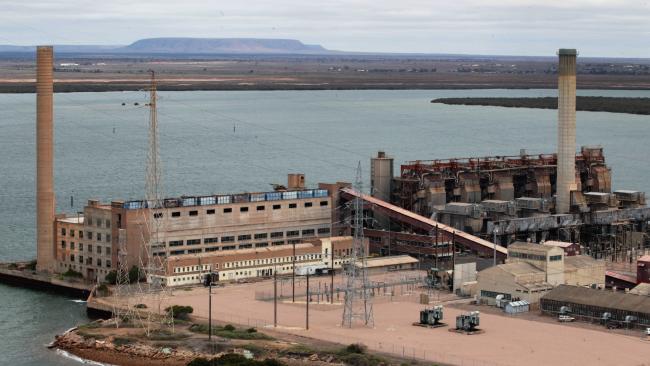Port Augusta's Coal-Fired Power Station Closes in South Australia

May 9, 2016 - The coal furnaces at Alinta Energy's Port Augusta power station in South Australia's north went cold yesterday as it went offline.
Less than a year ago, Alinta Energy announced the station — which is the city's bigger employer — would close after the company struggled to compete with government-backed renewable energy.
The company closed its coal mine at Leigh Creek, which fuelled its Playford A power station late last year, but trainloads of coal have been making the journey to the power station several times a week until only recently.
The mine had employed more than 250 people.
Alinta chief executive Jeff Dimery said the closure was sad for workers but inevitable.
"The reality is, the technology we are using here is old, the cost structures are high and there's no longer a place for us in the market," Mr. Dimery said.
"It was inevitable. It is inevitable that more coal-fired power stations will close into the future."
He said some families had three generations who worked in energy production at the site, which started with the State Electricity Company.
Port Augusta's mayor Sam Johnson said the power station helped diversify the city's economy when it was a rail hub in the 1940s and 50s.
"It gave a significant economic injection into Port Augusta both then and over its 62-year history," he said.
"[It's] a bit of a mixed feeling in Port Augusta at the moment and we've all known this now for the last 11 months that it is coming to an end.
"It will have a big impact on Port August, big impact on the region and a big impact on the state."
Decommissioning to Take Up to Two Years
Mr. Johnson said people had already left the area to find work elsewhere, but some had kept their houses with the intention to "return home".
About 140 employees at the site will leave over the next fortnight, but some will stay on for decommissioning.
The decommissioning process could take about 18 months to two years to complete. The Playford B power station was mothballed in 2012.
Alinta Energy worker Gary Rowbottom said the mood at the station had been "fairly sombre".
"I think everyone's feeling that sadness and wondering what comes next for them," Mr. Rowbottom said.
SA Treasurer Tom Koutsantonis said the old coal-fired generator "was past its day".
"The truth is, the reason it is closing is it couldn't make money in this market. The reason it can't make money in this market is even though it does pour in relatively cheap power into the grid, renewable energy is cheaper [due to subsidies]".
Alinta Energy has praised its Port Augusta and Leigh Creek workforce and described them as one of its greatest assets over the past five years.
Alinta's paid $3.5 million to support workers to transition into new work, on top of $75 million in entitlements and benefits.
Less Back-Up Energy for Peak Times
Australian Electricity Council chief executive Matthew Warren said due to the power station's closure the state would have less back-up energy available on days of peak demand.
He said the state would have a greater reliance on renewable energy and on the inter-connector from Victoria for base-load power.
Six Decades of Coal-Fired Power
Port Augusta's power stations have been switched off for the last time. Take a look back over their years as a major employer in the regional city.
"The reality for South Australians is that we're in uncharted waters," he said.
"There's an increased level of risk that we really haven't seen before anywhere in the world, so it doesn't mean we'll have more blackouts, hopefully if we're smart we can sort out solutions so power supply can be the same as usual, but it's an increased risk."
Frontier Economics energy market analyst Danny Price said the closure would push up electricity prices.
"The market contracts are now trading in South Australia, the base-load generator contracts they've jumped 80 percent. That's the wholesale component. The retail component would be roughly about 25 to 40 percent," Mr. Price said.

Port August Power Station, South Australia
Photo Courtesy of Martin Dean

